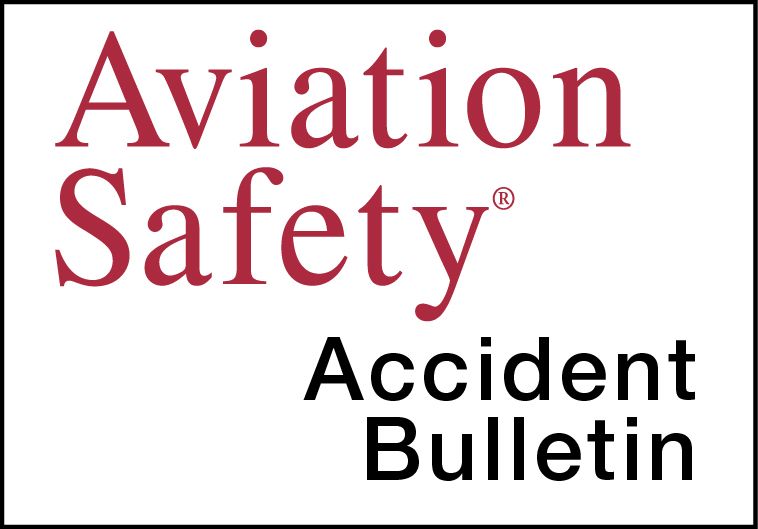AVweb’s General Aviation Accident Bulletin is taken from the pages of our sister publication, Aviation Safety magazine. All the reports listed here are preliminary and include only initial factual findings about crashes. You can learn more about the final probable cause on the NTSB’s website at www.ntsb.gov. Final reports appear about a year after the accident, although some take longer. Find out more about Aviation Safety at www.aviationsafetymagazine.com.
October 4, 2020, Cedaredge, Colo.
Cessna 210B Centurion
The airplane was destroyed at about 1150 Mountain time when its pilot made a forced landing after the engine failed. The pilot and one passenger were seriously injured. Visual conditions prevailed.
After takeoff from Delta, Colo., with 60 gallons of fuel, the airplane climbed along the valley parallel to a mesa. It was at least 1000 feet AGL over mountainous terrain when engine rpm started to gradually decrease. Remedial actions did not restore power and the pilot was unable to maintain altitude; he selected a clearing next to a highway for the forced landing. The airplane landed hard, bounced and came to rest upright next to the highway. A post-impact fire consumed most of the airplane after the pilot and passenger were helped away from the wreckage.
October 4, 2020, Beechhurst, N.Y.
Cessna 182P Skylane
At about 1505 Eastern time, the amphibious float-equipped airplane was substantially damaged during an attempted go-around from a water landing when it collided with a pier. The private pilot and the pilot-rated passenger in the right front seat were seriously injured; the rear-seated passenger was fatally injured. Visual conditions prevailed.
Although the pilot did not remember the events of the accident, the pilot-rated passenger reported the airplane touched down just before crossing a boat wake and bounced twice. The pilot appeared to “veer left” to avoid the wake but realized the airplane was “too fast” as it approached a concrete pier on the river’s southern bank. The pilot added power to go-around but the passenger explained that collision with the dock was inevitable, and if the pilot had cut power, the collision would have been less destructive.
A pilot-rated witness about 200- 300 yards west of the airplane’s initial touchdown point stated the airplane was landing downwind with an estimated tailwind of 10- 15 knots. He stated, “First water contact was nearly level and produced a very high rebound. Second contact appeared to be left pontoon only which may have skewed the craft to the south leading to the impact.”
October 5, 2020, Telluride, Colo.
Beechcraft S35 Bonanza
The airplane was substantially damaged at about 1304 Mountain time when it collided with mountainous terrain shortly after takeoff. The airline transport pilot and the passenger were fatally injured. Visual conditions prevailed.
Preliminary calculations show the airplane was about 300 pounds under its maximum gross takeoff weight. The flight’s ADS-B data show a normal takeoff and climb to the west and subsequent turn to the east. There were no known radio distress calls heard from the pilot after takeoff. The accident site was about eight miles east of the departure airport, which is at 9069 feet msl. The accident site’s elevation was 11,823 feet msl, with higher terrain surrounding it to the north, east and south. The wreckage showed evidence of a nearly vertical impact.
October 8, 2020, West Palm Beach, Fla.
Cessna 414
At about 1115 Eastern time, the airplane was substantially damaged during an aborted takeoff attempt. The private pilot and six passengers sustained serious injuries. Visual conditions prevailed; an IFR flight plan had been filed.
According to the pilot’s son, a multi-engine airplane-rated passenger, taxi and run-up operations were normal. Shortly after the takeoff roll began, he felt a momentary “slight shudder” which appeared to come from the controls. Soon, he observed the airspeed indicator about 10 to 15 knots past “blueline,” but the airplane remained on the runway. The pilot’s son attempted to pull back on the control yoke, but the controls would not move. He pulled the throttles to idle and applied maximum braking; he estimated airplane’s indicated airspeed was between 120 and 130 knots when the aborted takeoff was initiated. The airplane departed the paved portion of the runway and came to rest in a marsh.
October 11, 2020, Atlanta, GA
Piper PA-32-260 Cherokee Six 260
The airplane was substantially damaged at about 0825 Eastern time when the engine abruptly lost power after lifting off and the pilot aborted the takeoff. The pilot and two passengers were not injured. Visual conditions prevailed; an IFR flight plan had been filed. According to the pilot, he observed the engine instruments indicating the engine was developing full power for takeoff, and that airspeed was alive and increasing normally. At about 150-200 feet AGL, he noted an “abrupt reduction in engine noise.” He attempted to land on the remaining runway but the airplane overran the pavement and rolled about 200 feet onto grass before coming to rest. The pilot subsequently restarted the engine and taxied the airplane from the grass back onto the runway, where it was towed to the ramp.
This article originally appeared in the January 2021 issue of Aviation Safety magazine.
For more great content like this, subscribe to Aviation Safety!



































